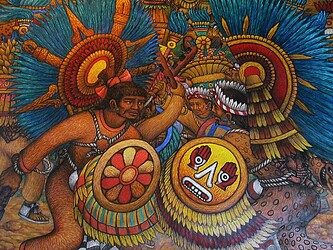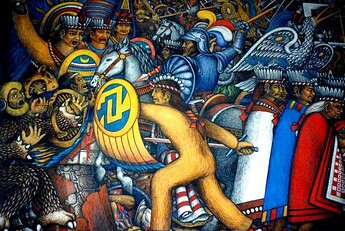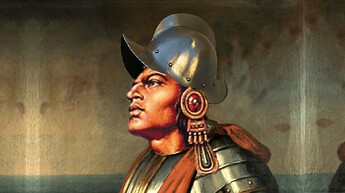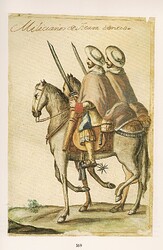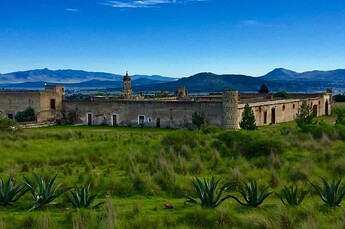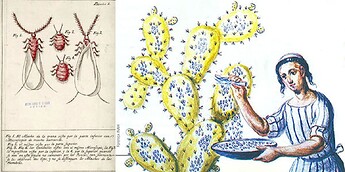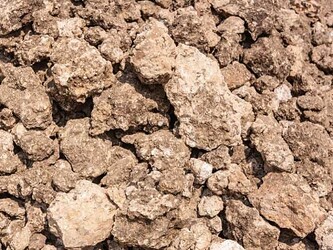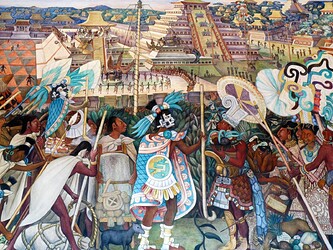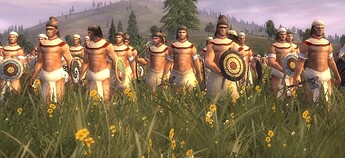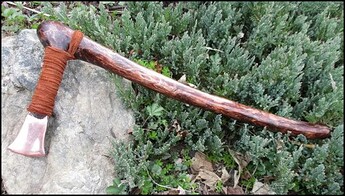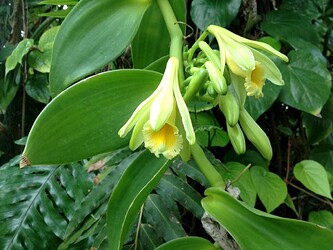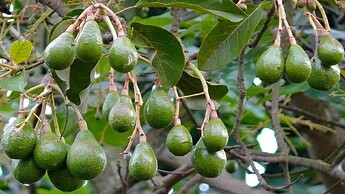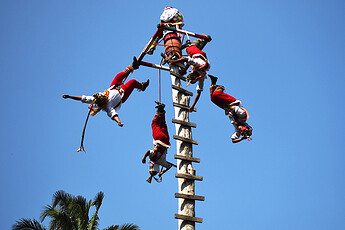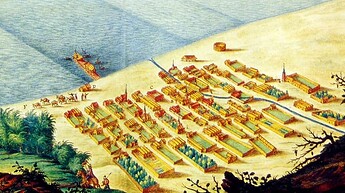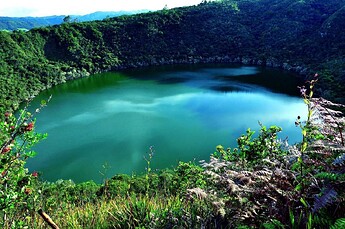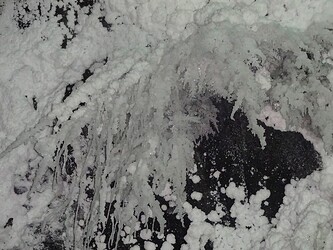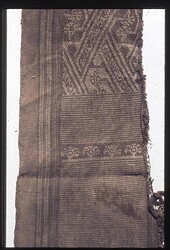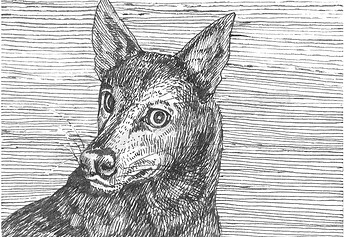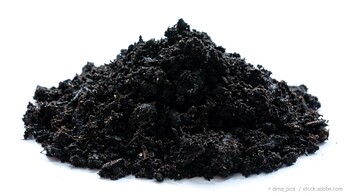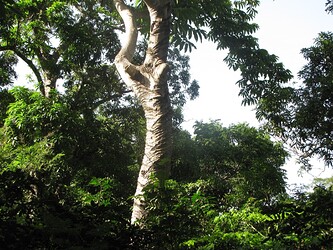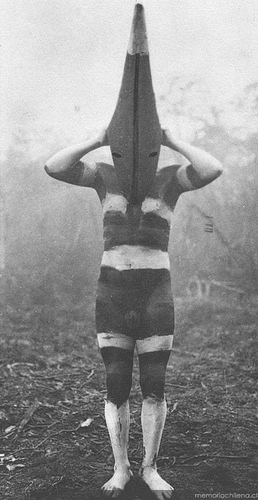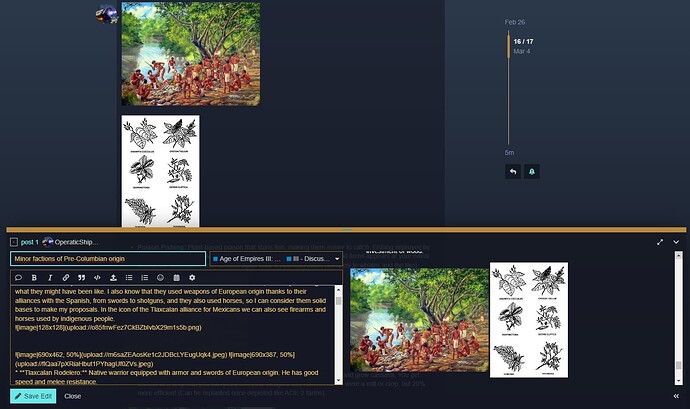Taking into account that much of America is underrepresented, I will make a compilation of minor factions that could be implemented in the future to give more diversity to the maps. These are some concepts that have occurred to me so far. I had already published most of them elsewhere, but I think it will be good as a new topic.
I’m not an expert on Native Americans or anything like that, I’m just an amateur, so if anyone wants to correct me on anything I would be grateful.
Tlaxcaltecas
Units:
Note: I can’t find any concrete information about the names of their units and their roles, so I’m speculating on what they might have been like. I also know that they used weapons of European origin thanks to their alliances with the Spanish, from swords to shotguns, and they also used horses, so I can consider them solid bases to make my proposals. In the icon of the Tlaxcalan alliance for Mexicans we can also see firearms and horses used by indigenous people.
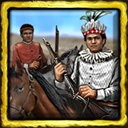
- Tlaxcalan Rodelero: Native warrior equipped with armor and swords of European origin. He has good speed and melee resistance.
Tlaxcala's role in the Conquest led to ongoing cultural repercussions
- Tlaxcalan border militia: Melee cavalry unit, which can dismount and become a harquebusier. Effective against light infantry when mounted, and against heavy infantry when dismounted (available in age 3)
Aculco, lo que fue y lo que es: 08/29/23
Improvements/technological:
- Tlaxcalteca pulque haciendas: Gives you two haciendas construction wagons and increases the limit by +2. You can rebuild them if they are destroyed. (Upgrade available at age 3 at a cost of 400 wood and 200 coins) (Hacienda construction wagon enabled in the urban center in age V).
Pulque, belleza e historia: conoce las Haciendas de Tlaxcala a un bajo costo - Infobae
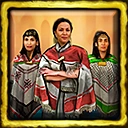
- Tlaxcala Textiles: Enables the creation of villagers on haciendas (if you can’t do so), and gives you 2 villagers for each hacienda and farm building you have. (slight variation of the Tlaxcalan alliance of Mexican civilization. It will compute as the same improvement if Mexico uses the state of Tlaxcala).

- Mexican Legacy: Enable the Aztec Initiation and Aztec Chocolate Recipes improvements in the native
embassy.
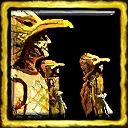
Aztec Initiation enabled

Aztec Chocolate Recipes enabled
(It is a variation, so in essence it is the same as the state of Tlaxcala for Mexico, so it will count as the same).
- Tlaxcalteca cochineal: Insect that produces red ink for textile use. Haciendas and urban centers now passively generate a slight additional income of experience and coins (such as feitorias). (Instead of experience, influence for African civilizations, and export for Asian civilizations).
Cochinilla - Enciclopedia de la Historia del Mundo
- Tequesquite Mines: Salt substitute used to season foods. It gives you a mine with 1000 quick-draw coins, you can recreate it after it runs out, but you have to wait a few minutes.
Tequesquite - Wikipedia, la enciclopedia libre República de Tlaxcallan - Wikipedia, la enciclopedia libre
Totonacs
Unit:
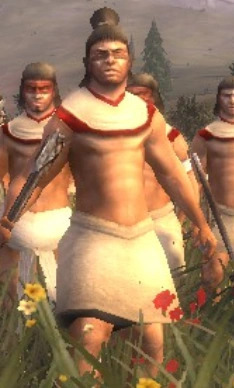
- Eloxochitl: Melee shock infantry armed with a copper ax and shield.
Note: I didn’t find much information, but my guess is that it would be a type of unit similar to Rattan or Coyote Runner.
This Southern Swedish Bronze Age Copper Battle Ax is absolutely identical to the weapons, carried by the Totonacs, when they joined the Spanish conquistadors in the attack on Tenochtitlan, the capital of the Mexica (Aztecs). Unraveling the Mysterious Origin of the Totonacs – The Americas Revealed
Totonac | Historica Wiki | Fandom
Improvements:
- Vanilla Export: The Totonacs give you access to this spice, giving you an indefinite flow of experience and coins (instead of coins, export for Asian civilizations or influence for African civilizations).
- Avocado farm: The Totonacs give you an avocado grove, it is limited, but you can create it again once it runs out. (It is enabled as a createable unit in the TP). It only supports 5 workers, but all ‘crop of food’ and ‘berry’ type upgrades affect it.
- The Voladores (Flyers’) dance ceremony: Ceremony that is usually held just before the rainy season, predicting that it is a good time for agriculture. You will receive double experience for each building you build or plan to build in the future, and farming upgrades you make or have made so far give an experience reward equal to their cost. (I changed the original proposal because it seemed a bit tedious to me).
“In its steps the Flyers dance represents the water cycle, the seasons of rain and drought; this explains the invocation to Wind/Storm to ward off the drought from the sown fields, given that in general the dance is performed in June, during the rainy season. However it also invokes Hurricane, pacifying and controlling it and matching its centre to that of the Voladores pole.” https://www.mexicolore.co.uk/aztecs/home/the-totonac-voladores-ceremony-an-aquatic-ritual-2
Los voladores | Upper Necaxa Totonac Project
- Una nueva ciudad: By being an ally of the Totonacas, they will allow you to found a new city on these new lands, so you will be able to build an additional urban center. You will receive a wagon and the maximum population limit increases by +10.
“The Totonacs also helped Cortés build the town of Villa Rica de la Vera Cruz, which was the starting point for his attempt to conquer the Aztec Empire.”
- Totonac diets : All natural food sources yield twice as much (game animals, balla bushes, and fish). Also all these resources are revealed on the map.
“There is a total absence of comals, metates and manos meaning the Totonacs did not eat tortillas; however, even though corn was grown it did not form a large part of their diet. The Totonacs ate fruit, most notably zapotes, guavas, papayas, plantains and avocados.”
Muisca
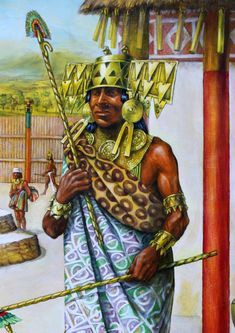
Unit(s):
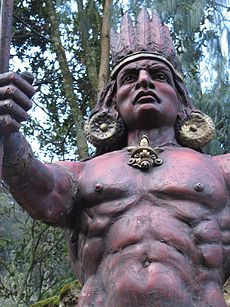
- Guecha warrior - Wikipedia : It could be a unit like the blowgun warrior, but with a good melee attack. Something like a fusion of the Zapotec lightning warrior and the Caribbean with a blowgun. With good speed. Changes armor depending on the mode it is in (When it attacks from a distance it will have armor from a distance, when it attacks from melee it will have armor from melee). I don’t know what label it might have. Maybe it’s light infantry, or maybe shock infantry.
The Franciscan friar, Pedro Simón (1578 – 1620) described the warriors as “men of great physique, bodies, bold, loose, determined and vigilant”. Lucas Fernández de Piedrahita (1624 – 1688) a catholic prelate described the warriors as “brave and determined men, with big beautiful physiques, lightness and skill”. Unlike the common men, the warriors wore their hair very short[5] and were allowed to wear gold beads and ornaments through edge-pierced ears, nose and lips.
The warriors carried clubs, darts, spears, bows and arrows, and slingshots. They took Panche and Calima slaves with them to war. The men went into combat with curled plumes of parrot feathers, and wide ribbons of fine gold encrusted with emeralds. They wore bracelets and fine coral and gold beads. Inks and Jagua tattoos were also used.
Improvements/technologies:
- Worship of the guatative goddess: Unlock a passive ability where every certain amount of time you can sacrifice coins in exchange for a lot of experience.
Summary
The origin of the legend of El Dorado (Spanish for “The Golden One”) in the early 16th century may be located in the Muisca Confederation[citation needed ]. The zipa offered gold and other treasures to the Guatavita goddess. To do so, the zipa covered himself with gold dust and washed it off in the lake while tossing gold trinkets into the waters. This tradition was well known outside the Confederation, as far as the Caribbean Sea; the Spaniards were attracted by stories of a “city of gold” that did not exist. Indigenous people sometimes got rid of the avaricious Spaniards in that way, pointing them in the direction of other peoples. Lake Guatavita was explored by conquistadors who were looking for gold offerings from the zipa to the goddess. The legend grew until the term became a metaphor for any place where great wealth may be found or made.
Worship of the guatative goddess: Unlock a passive ability where every certain amount of time you can sacrifice coins in exchange for a lot of experience.
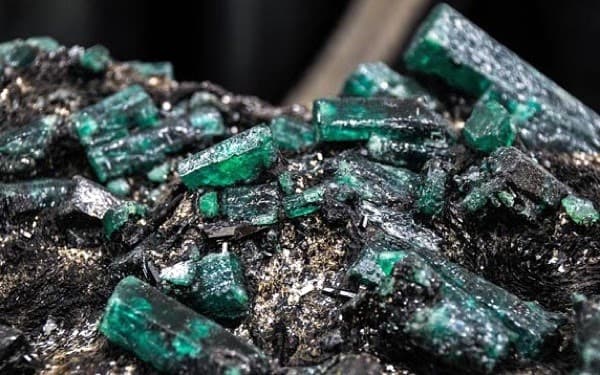
- Muisca emerald extraction method: Reveal all the emerald mines on the map and you can get more coins and experience from the emerald mines.
This would imply a new type of mine, ‘Emerald Mine’. It’s a new type of mine where villagers can mine experience and coins at the same time, it’s inexhaustible like whales, but only 4-6 villagers can work at a time.
Why also experience? Because emeralds tend to be rarer than diamonds, their value may also reflect prestige, which translates to in-game experience. They were also very popular around the world in that period: Colour of Paradise: The Emerald in the Age of Gunpowder Empires, by Kris Lane (2010) - Not Even Past
Emeralds were exploited using pits dug next to the formation. Because the emeralds from Somondoco were in sedimentary rocks, they would wash clean into the pits during the rainy season
- Salt people: The muisca will give you access to a salt mine that you can extract from any point on the map, and you will be able to extract 10% faster from the salt mines. (You can recreate it once it runs out)
They were called “Salt People” because of their extraction of halite from various salt mines on the Altiplano, predominantly in Zipaquirá, Nemocón and Tausa. Muisca mummification - Wikipedia

- Muisca Barter: Natives are 10% cheaper, and trading posts are 30% cheaper. You will also have access to a construction cart that turns into a muisca market where you will have access to 3 improvements:
Excess food: It is a button that converts all current food into coins. It can be reused every 5 minutes and the first time you use it increases crop production by 5%.
The fertile Muisca lands make food produced in excess, but you can trade it with other tribes.
Muisca goldsmith: From now on the muisca market will give you a passive experience income.
Muisca Textiles: All villagers are 5% cheaper.
- Cotton Cloaks: Muisca villagers and warriors with more tolerance to projectiles. Gives 0.10 armor to projectiles (even if the muisca warrior is in mele mode).
This is a game that I found by chance based on Muisca. Use landscapes like the ones I proposed for the north of the Andes, such as the frailejones.
The Arawaks
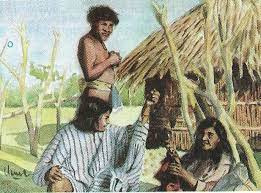
Units:

- Arawak archer: Archer who shoots poisoned arrows, and can decently defend against melee attacks thanks to a Macana . They weren’t very strong because they weren’t much of a warrior, but they can hunt, gather berries, and can work on crops.
Improvements/technologies:
- Parrots and dogs: Arawak parrots and josibi dogs help you hunt. Arawak archers and your scout gain a passive bonus that prevents hunting prey from fleeing, as well as a 25% bonus to Arawak bowmen’s hunt and 5% overall.
- Tierra preta: A mix of charcoal, bones, broken pottery, compost, and manure goes into low-fertility soil, making your soils insanely productive. Your crops are 40-50% more productive, but it is an expensive investment of wood.
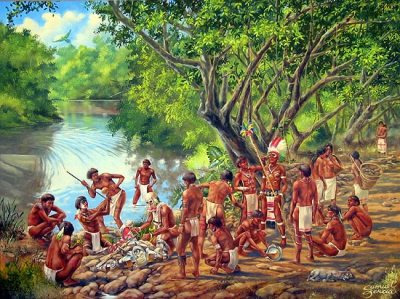
- Poison Fishing: Plant-based poison that stuns fish, making them easier to catch. Fishing improves by 20% for canoes and 10% for fishing boats. A school of fish with 1000 food items appears at your naval metropolis destination, (can be sent again once it runs out) (does not apply to whales and the like).

- Cassava Arawak: The Arawak provide you with the knowledge to cook and grow cassava. You get access to a crop that you can plant and your villagers can harvest as if it were a mill or crop, but 20% more efficient (Can be replanted once depleted like AOE-2 farms).
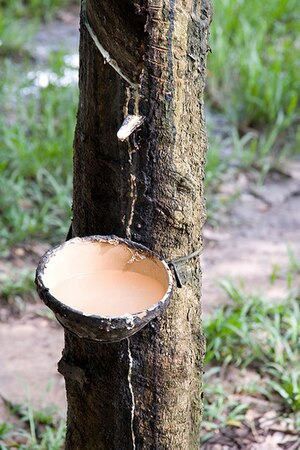
- Hatie Tree: The Arawaks provide you with knowledge of the usefulness of the rubber tree, plus they allow you to acquire a grove of rubber trees, from which workers can extract coins indefinitely. An infinite source of coins that allows 6 workers to work.
Note: I hope that the rubber tree fits plot and historically speaking. I always wanted to propose this.
That’s all for now. Maybe I’ll propose more in the future.
